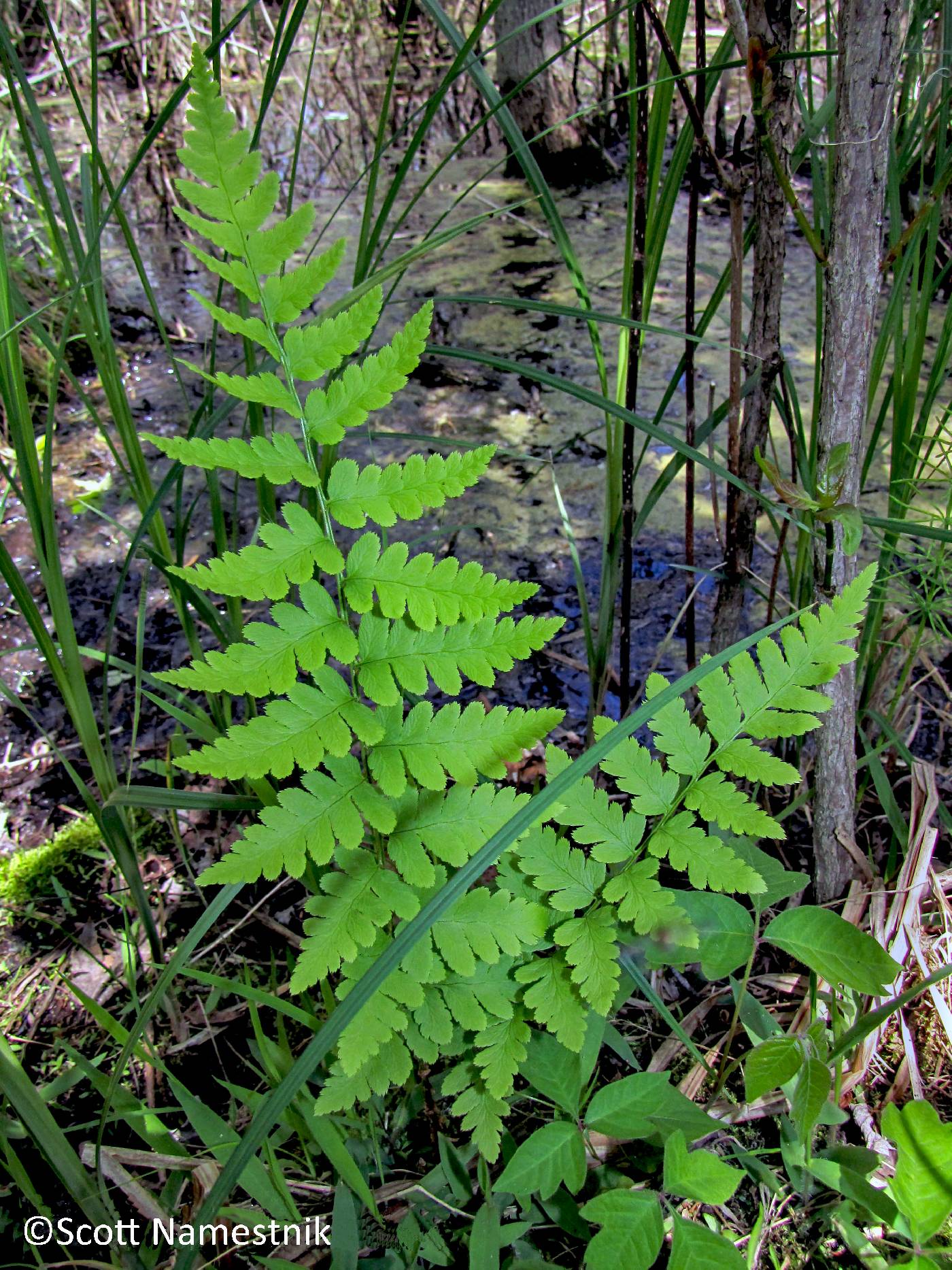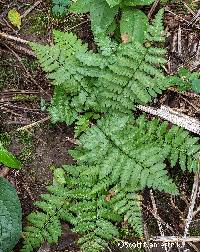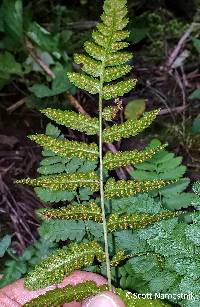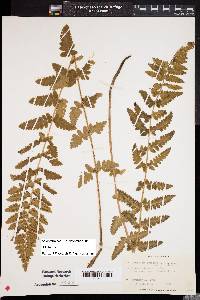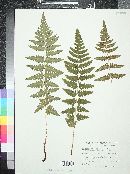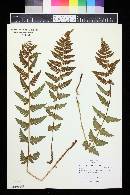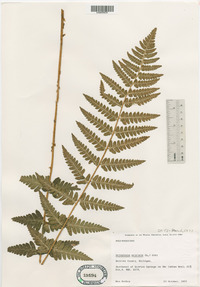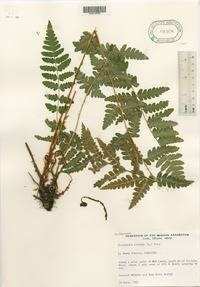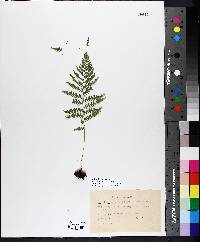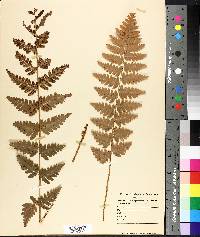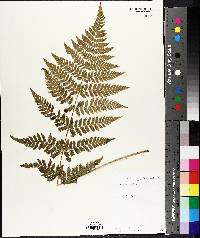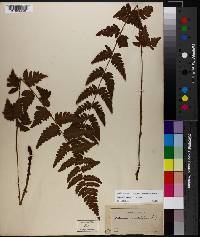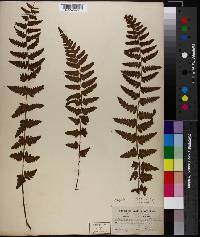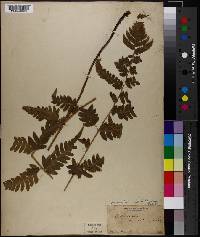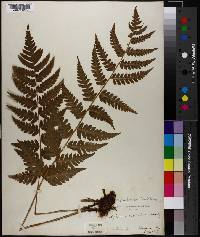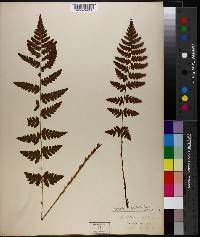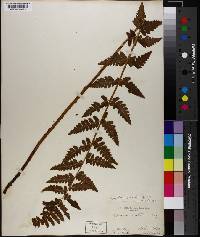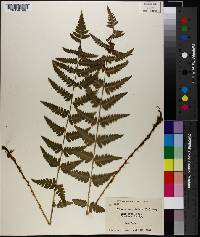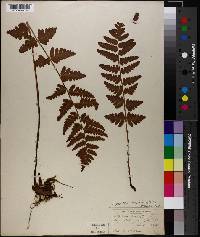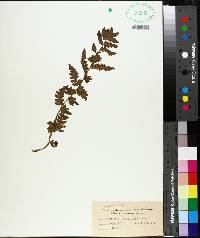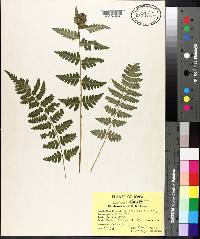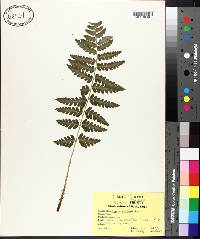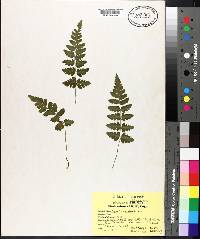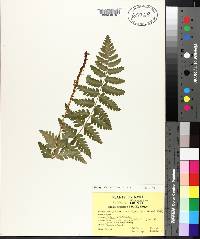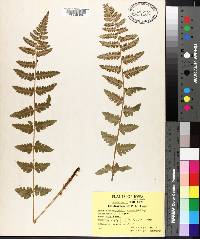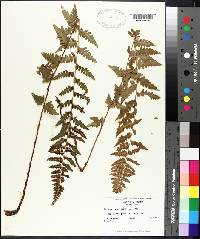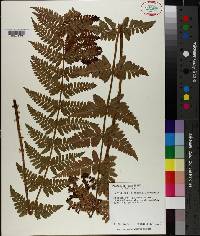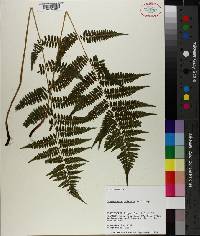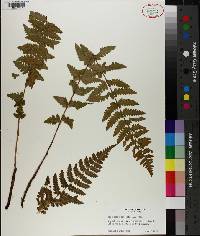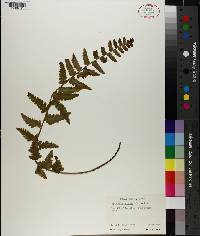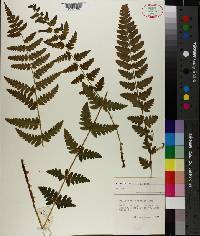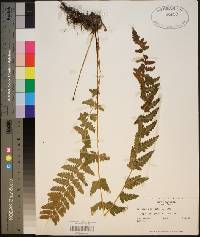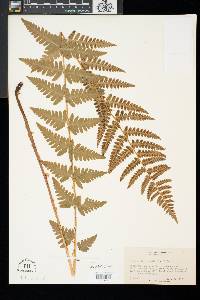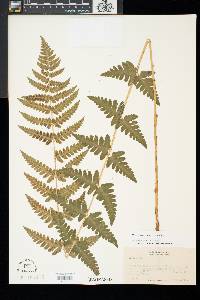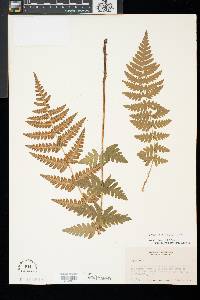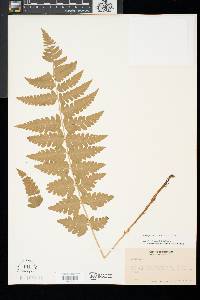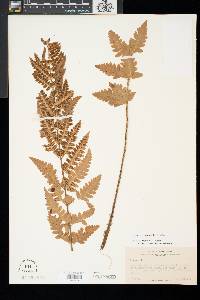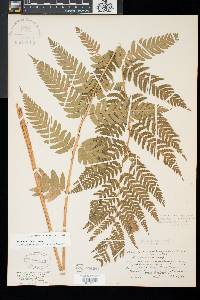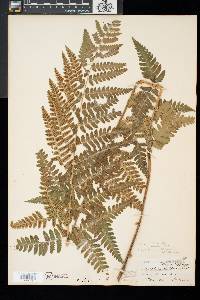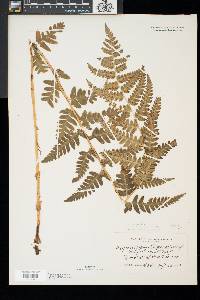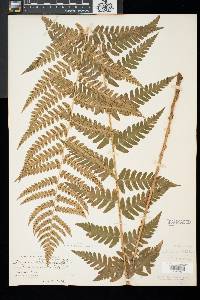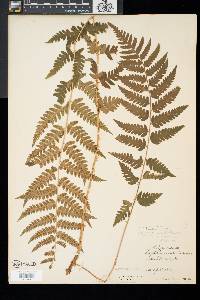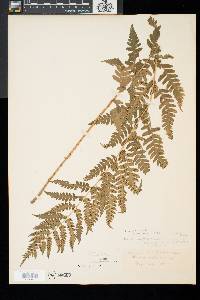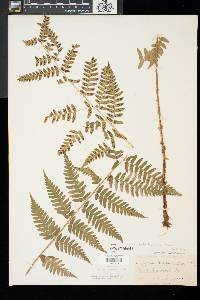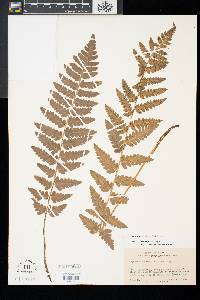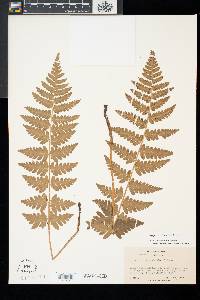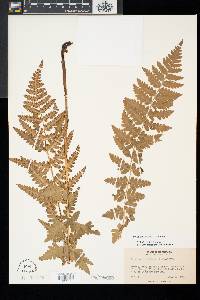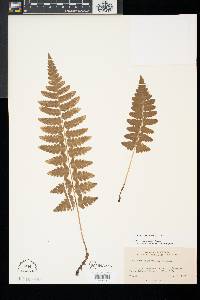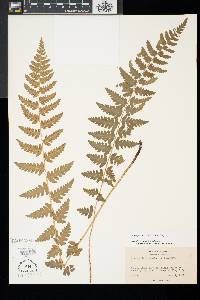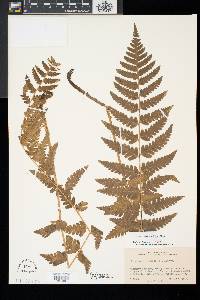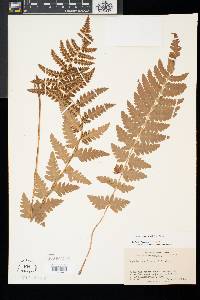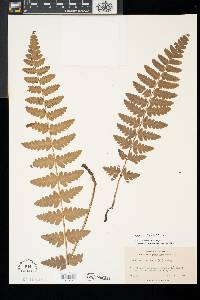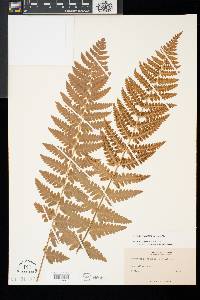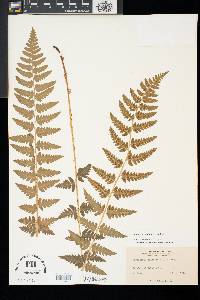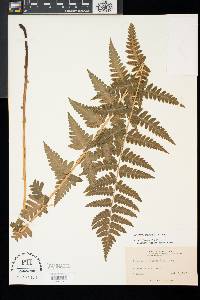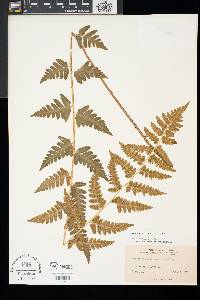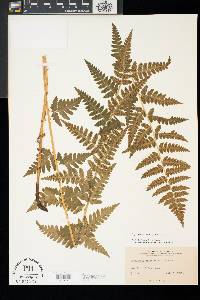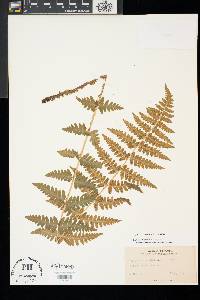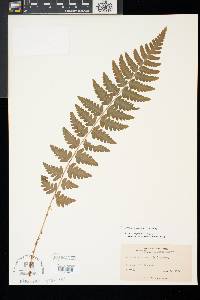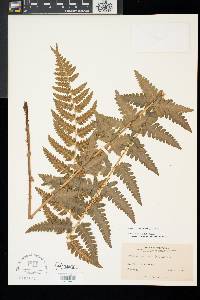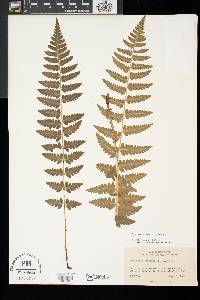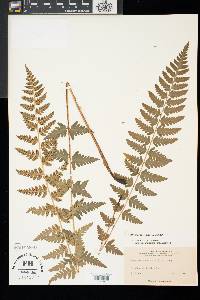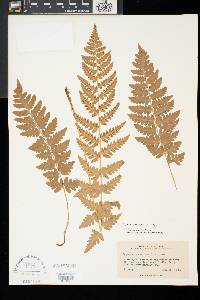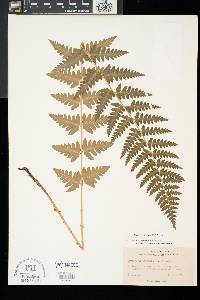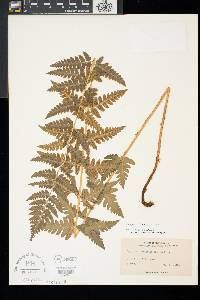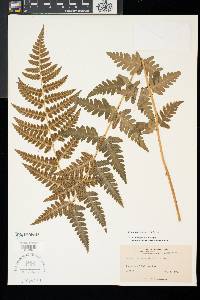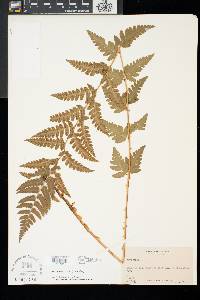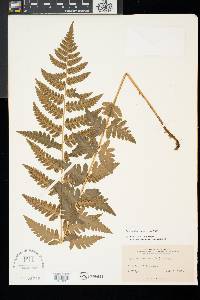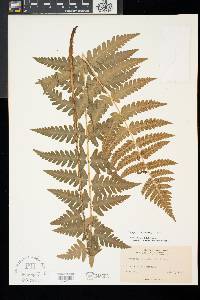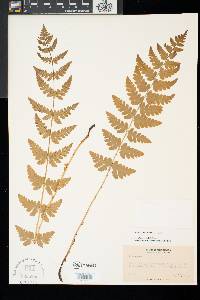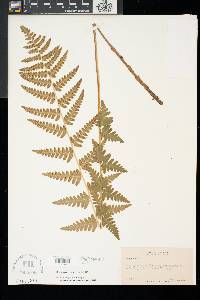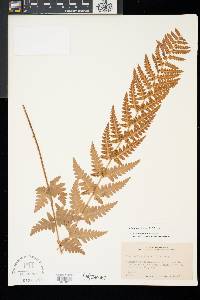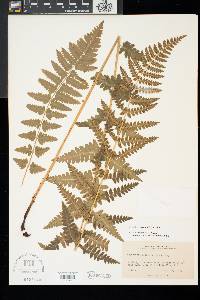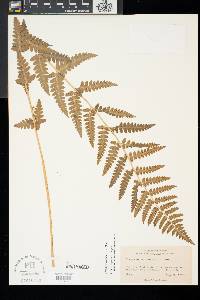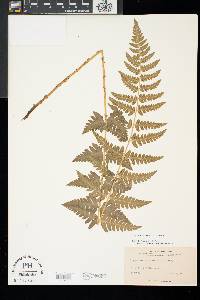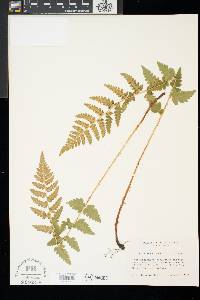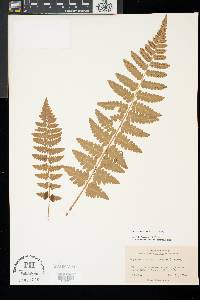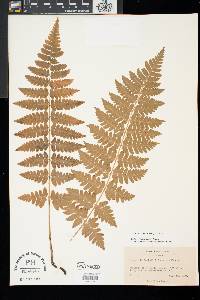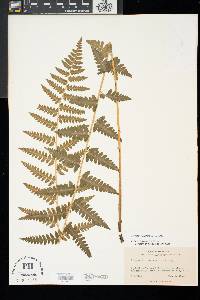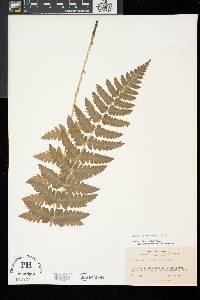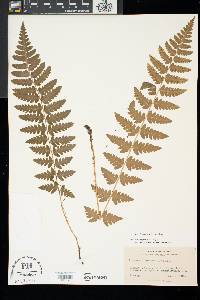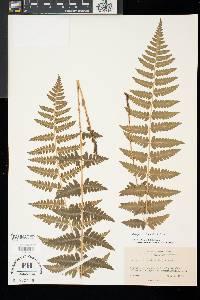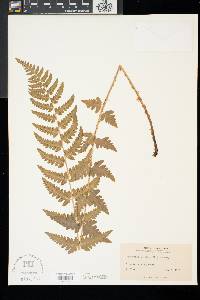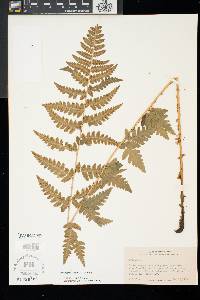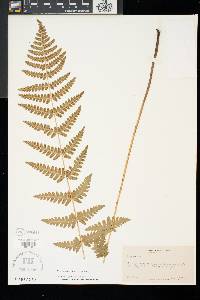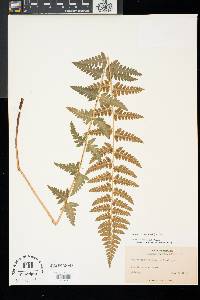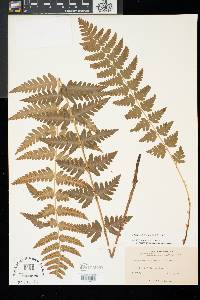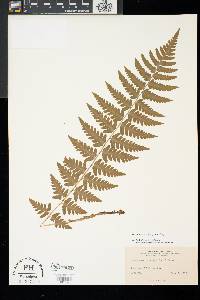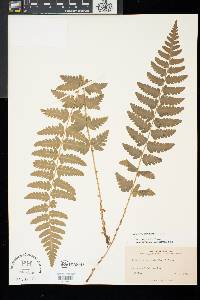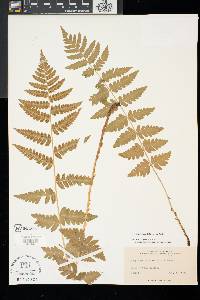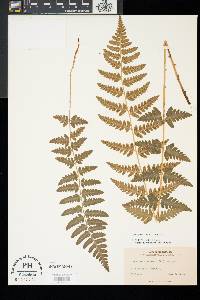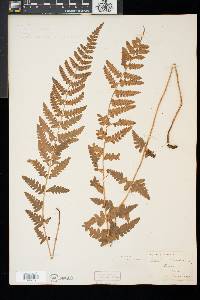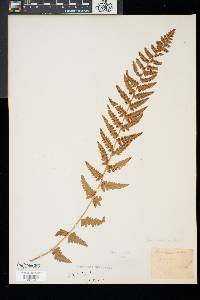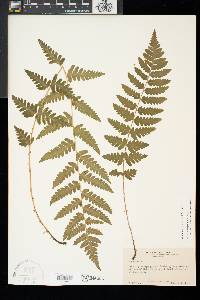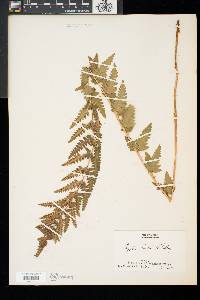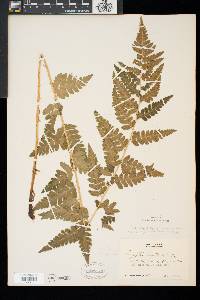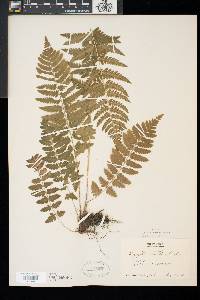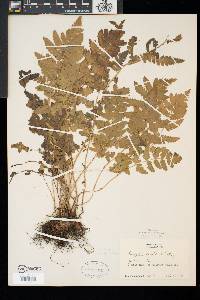
|
|
|
|
Family: Dryopteridaceae
Crested Wood Fern, more...crested woodfern
[Nephrodium cristatum (L.) Michx., moreNephrodium cristatum f. silvaticum Poyser, Polystichum cristatum (L.) Roth] |
Leaves dimorphic, 35--70 × 8--12 cm; fertile leaves dying back in winter; sterile leaves several, small, green through winter, forming 'rosette.' Petiole 1/4--1/3 length of leaf, scaly at least at base; scales scattered, tan. Blade green, narrowly lanceolate or with parallel sides, pinnate-pinnatifid, not glandular. Pinnae of fertile leaves twisted out of plane of blade and perpendicular to it, deltate; basal pinnae deltate, somewhat reduced, basal pinnules longer than adjacent pinnules, basal basiscopic pinnule and basal acroscopic pinnule equal; pinnule margins distantly serrate, with spiny teeth. Sori midway between midvein and margin of segments. Indusia lacking glands. 2 n = 164. Swamps, swampy woods, or open shrubby wetlands; 0--1200 m; Alta., B.C., Man., N.B., Nfld., N.S., Ont., P.E.I., Que., Sask.; Ala., Conn., Del., Ill., Ind., Iowa, Maine, Md., Mass., Mich., Minn., Mont., Nebr., N.H., N.J., N.Y., N.C., N.Dak., Ohio, Pa., R.I., Tenn., Vt., Va., W.Va., Wis.; Europe. Dryopteris cristata is believed to be an allotetraploid derived from D . ludoviciana and an unknown diploid called ' D . semicristata ' by W. H. Wagner Jr. (1971). This ancestral taxon could have been either North American or Eurasian and may have become extinct during the last glaciation (T. J. Carlson and W. H. Wagner Jr. 1982). Dryopteris cristata hybridizes with five species; these hybrids can be identified by the narrow blades and deltate proximal pinnae.
Perennial fern 35 - 70 cm tall Leaves: clustered, stalked, green, 15 - 60 cm long (fertile blades 30 - 60 cm), 8 - 12 cm wide, in outline narrowly lance-shaped with parallel sides, but pinnately compound. The leaves are typically hairless on the upper surface, never glandular-hairy, but the lower surface of the main "midrib" (rachis) has sparse scales, and a lengthwise groove along its upper surface. Fertile leaves die back in winter, but several sterile leaves remain green through winter in a rosette. Rhizome: horizontal and short-creeping to somewhat ascending, scaly. Leaf stalks: up to one-third length of blade, with scattered tan scales at base. Spores: 64 per sac, brownish, all of one kind, single-sectioned (monolete), oblong or kidney-shaped, and coarsely wrinkled or with folded wings. The spores give rise to the gametophyte (the sexual phase of the plant), which is small, green, heart-shaped, hairless or often with glands or hairs, and sits above the ground. Similar species: Dryopteris cristata is most similar to one of its hybrids, D. clintoniana, but that species differs by having narrower basal leaf divisions (pinnae), the lowest pair of pinnae are usually between 5 and 10 cm long, and the pinnae of the fertile leaves are only slightly twisted so they remain in nearly the same plane of the blade. A hybrid of D. cristata and D. intermedia, D. x boottii, can be distinguished by its inability to produce fertile spores, and the presence of distinct glandular hairs on the pinnae "midribs" (costae) and flaps of tissue over the spore clusters (indusia). Habitat and ecology: Occasional, in boggy ground such as acid bogs, moist woods, fens, and on shaded stumps and rotten logs in seepage areas. Occurence in the Chicago region: native Notes: This species is believed to have originated by hybridization between D. ludoviciana and an unknown diploid species that is hypothesized to have become extinct in the last glaciation. Dryopteris cristata is one of our more widespread species in the genus, and hybridizes with five other species to produce hybrids sharing the characters of narrow leaf blades and triangular lowest pinnae. Author: The Field Museum Rhizome horizontal and short-creeping to somewhat ascending; lvs somewhat dimorphic, the deciduous fertile ones larger and more erect than the evergreen sterile ones; petiolar scales light brown, concolorous; fertile lvs mostly 3.5-8 dm, with mostly 10-25 pairs of pinnae, these 5-9 cm, to 2.5(-4) cm wide, the segments to 20 נ8 mm, often broadly confluent, the lowest pinnae reduced, broadly triangular, to about twice as long as wide; fertile pinnae twisted at an angle to the plane of the blade in life; sori midway between the midvein and the margin; sterile lvs half to three-fourths as long as the fertile; 2n=164. Marshes and wet woods; Nf. to Sask. and B.C., s. to N.C., Tenn., Io., Nebr., and Ida.; Eur. Gleason, Henry A. & Cronquist, Arthur J. 1991. Manual of vascular plants of northeastern United States and adjacent Canada. lxxv + 910 pp. ©The New York Botanical Garden. All rights reserved. Used by permission. From Flora of Indiana (1940) by Charles C. Deam This species is restricted nearly to the lake area where it is frequent in tamarack bogs and in low woods, usually in masses of decaying organic matter. There are, however, reports of it from Grant, Howard, and Monroe Counties. [Deam reports the following about the hybrid Dryopteris cristata × D. carthusiana:] a closely allied form which is represented in my collection by a single specimen. It is my no. 54091 from Lagrange County, which was determined by C. A. Weatherby ...... Indiana Coefficient of Conservatism: C = 10 Wetland Indicator Status: OBL |

